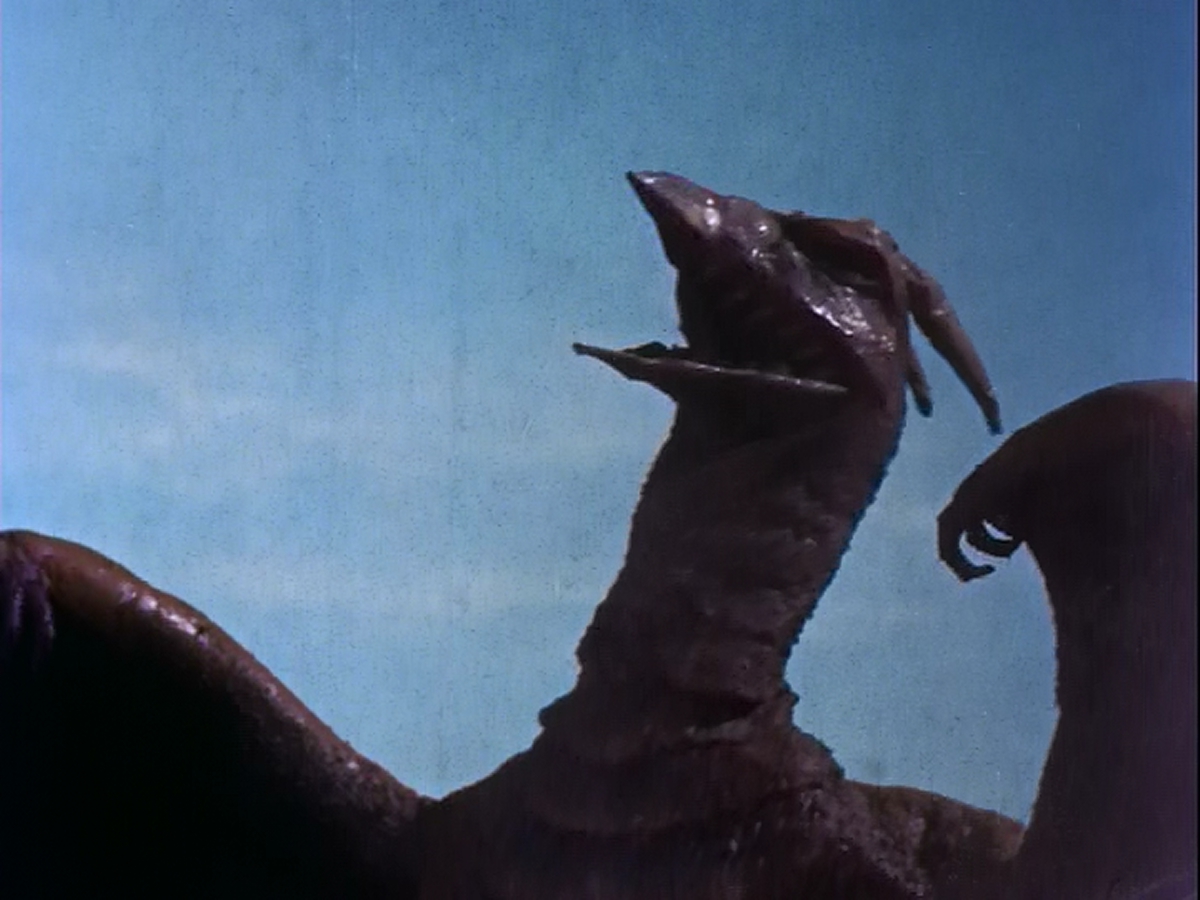
Like the original Godzilla, Rodan is a vehicle for social criticism. The film begins with coal miners. They have a dangerous job, yet they are the foundation on which civilization depends. Some of the hazards of mining are shown early in the film, and the Meganulons can be seen as a metaphor for the dangers of mining. Screenwriter Takashi Kimura often had a more somber tone than the other long-term writer of kaiju film Sekizawa. Mining is shown to be a dangerous task.
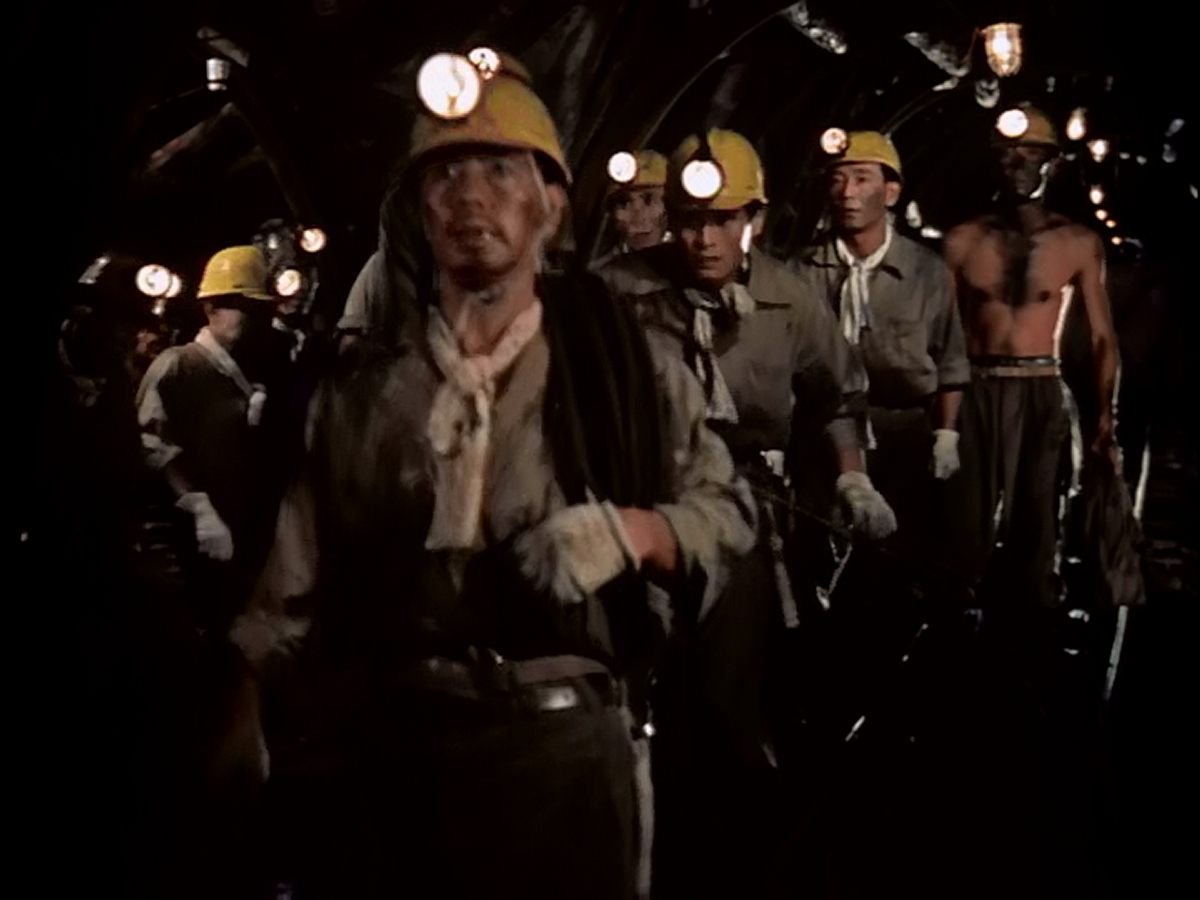
Further, Rodan, like Godzilla, begins with an element of mystery. But this one is much more human. After a mine disaster, a miner is discovered slashed to death. Is the man he was always fighting with, Goro, responsible? This is early in the Kaiju film, and they were still treated as serious dramas. The miner's wife weeps for her dead husband. Two rescue workers are pulled under water before our eyes. This is kaiju film as horror, not kids entertainment, as ripples of the deaths spread throughout the small community. We see the women of the community weeping as their husbands vanish or die.
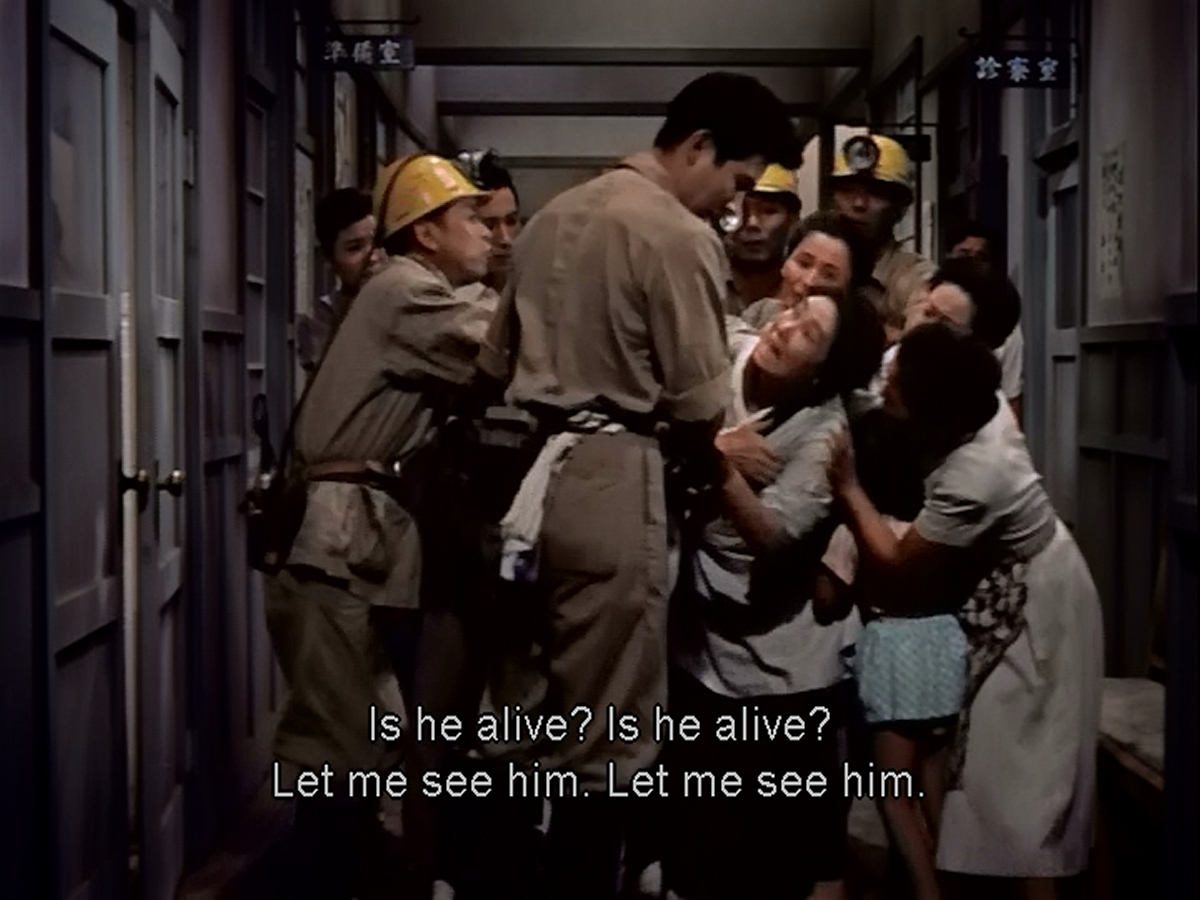
More than any previouas film, the monsters in Rodan kill people. The Meganulon, which is really more of a standard monster than a kaiju, since it fits in a house. We are shown the bloody bodies of the two miners who are killed by the crawling meganulon.
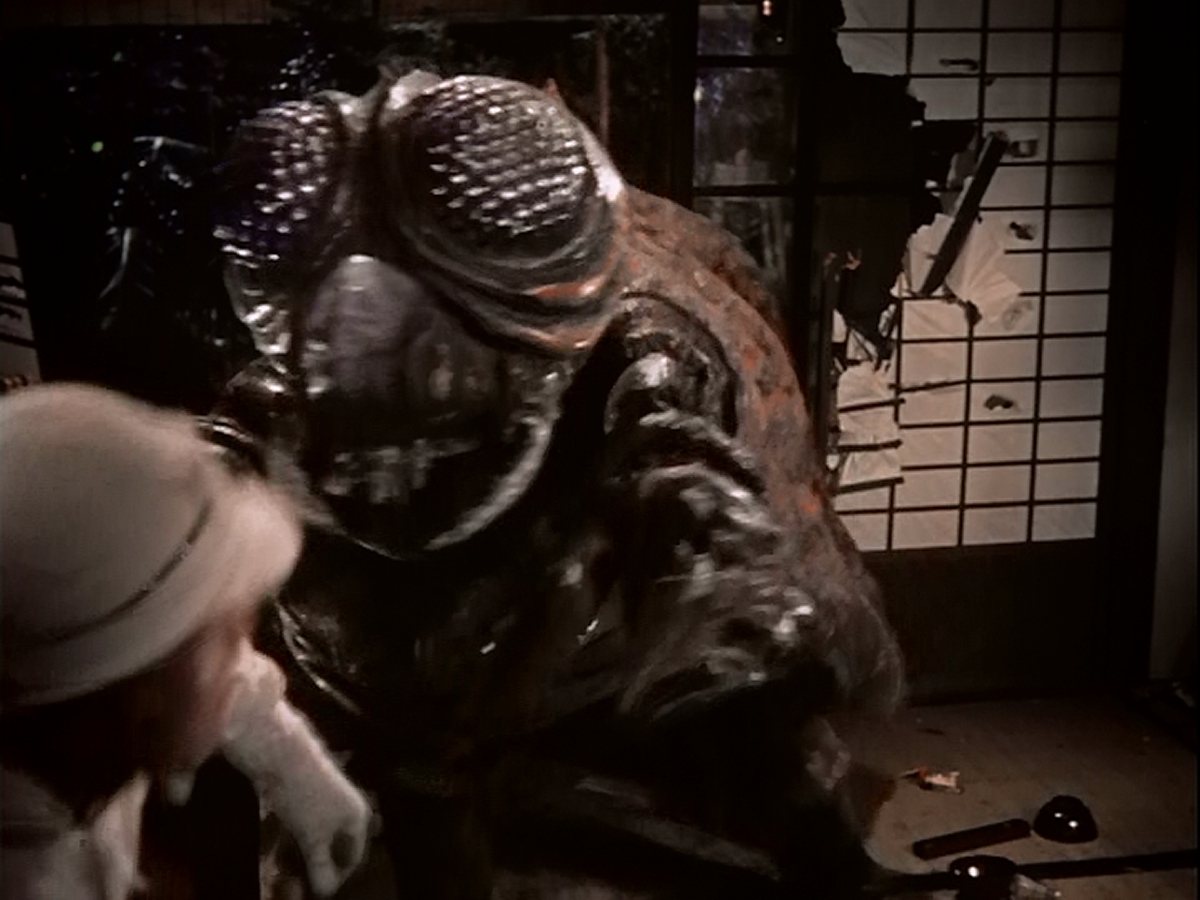
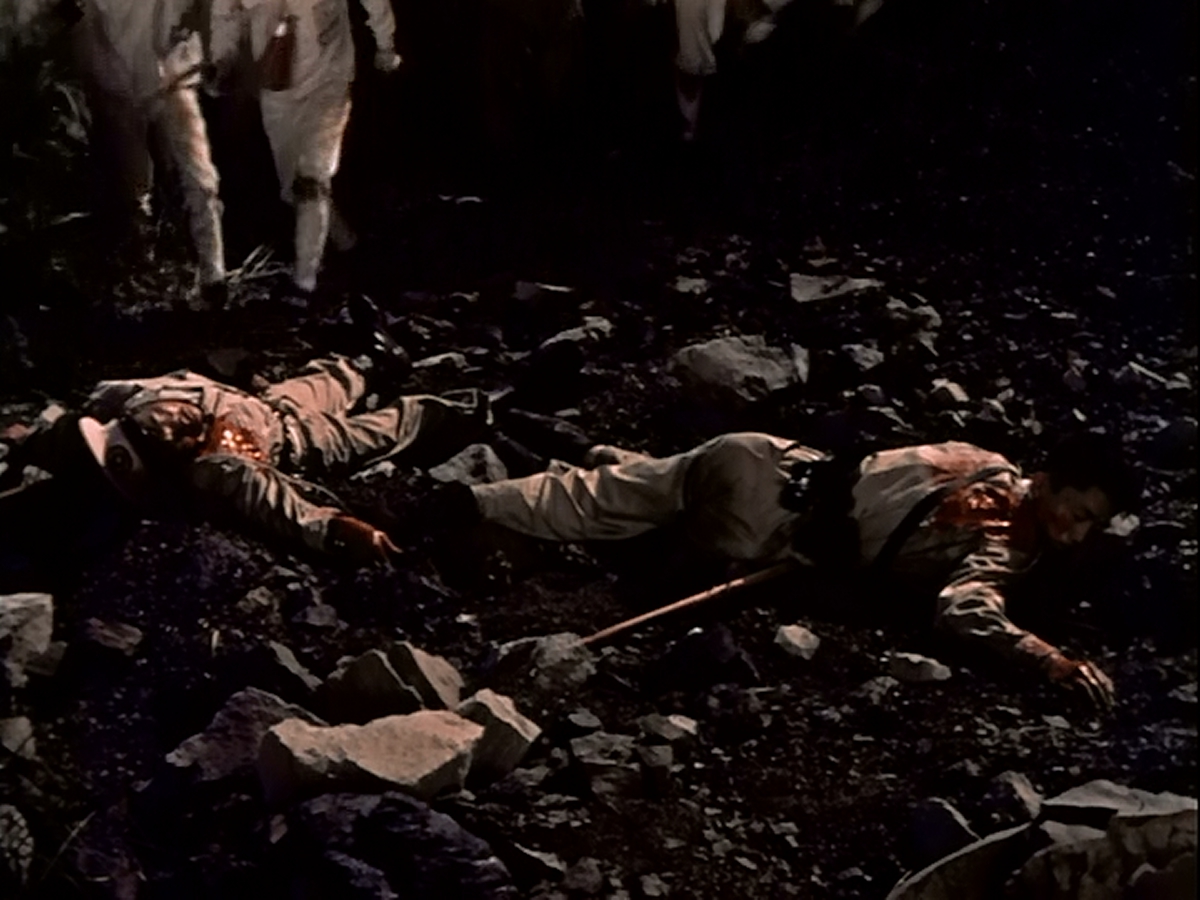
Once the monster is established, the response is swift. The miners bring a machine gun down into the mine. The meganulon is, like so many other monsters, immune to bullets. But the Meganulons are not the major problem. They get a mining cart full of coal dropped on them. Everyone thinks the problem is solved, about half-way through the film, it's merely a precursor to the real threat, which eats meganulons; a giant pterosaurs. Rodan don't show up until thirty-six minues into the film.
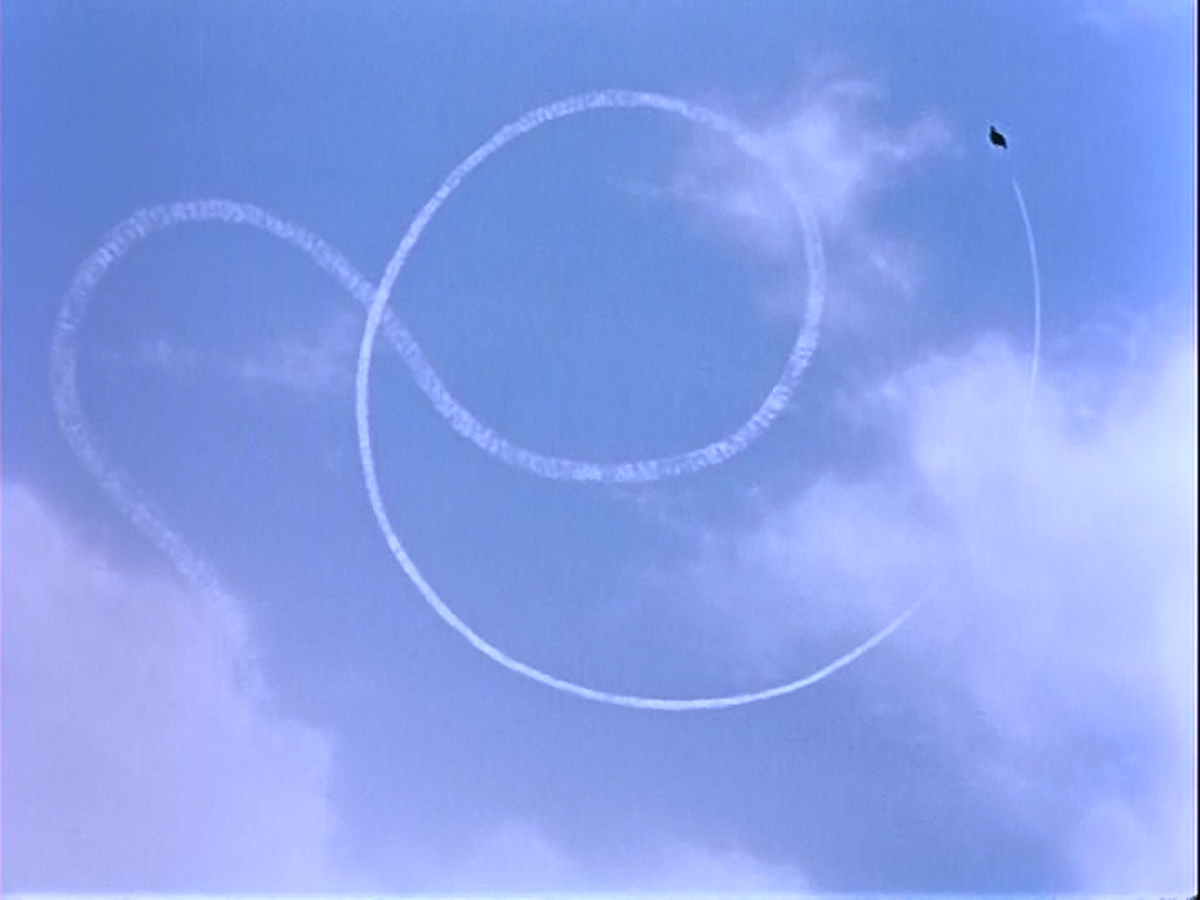
And again, people are killed. The first pilot to track the monster is killed, and a discuassion held over his bloody helmet. A couple taking pictures vanish, the only clues of their fate the last pictures taken from their camera.
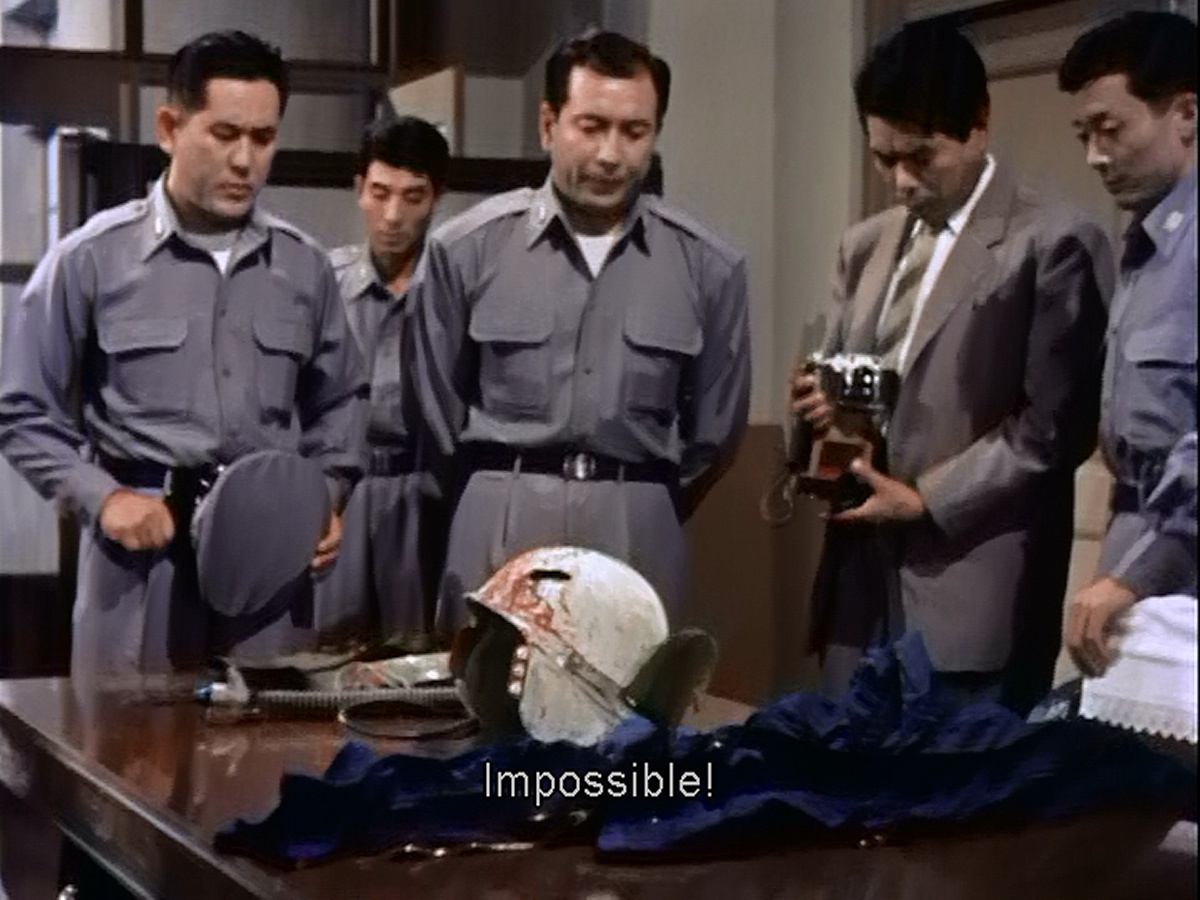
After than, through t's another fifteen minutes before we get a good look at Rodan. Because this is an Ishiro Honda film, Rodan is destructive because of its very existence. It flies so fast that it creates a wake that destroys what it passes over. This is a first movie for Rodan, so it is not presented with another monster to fight.
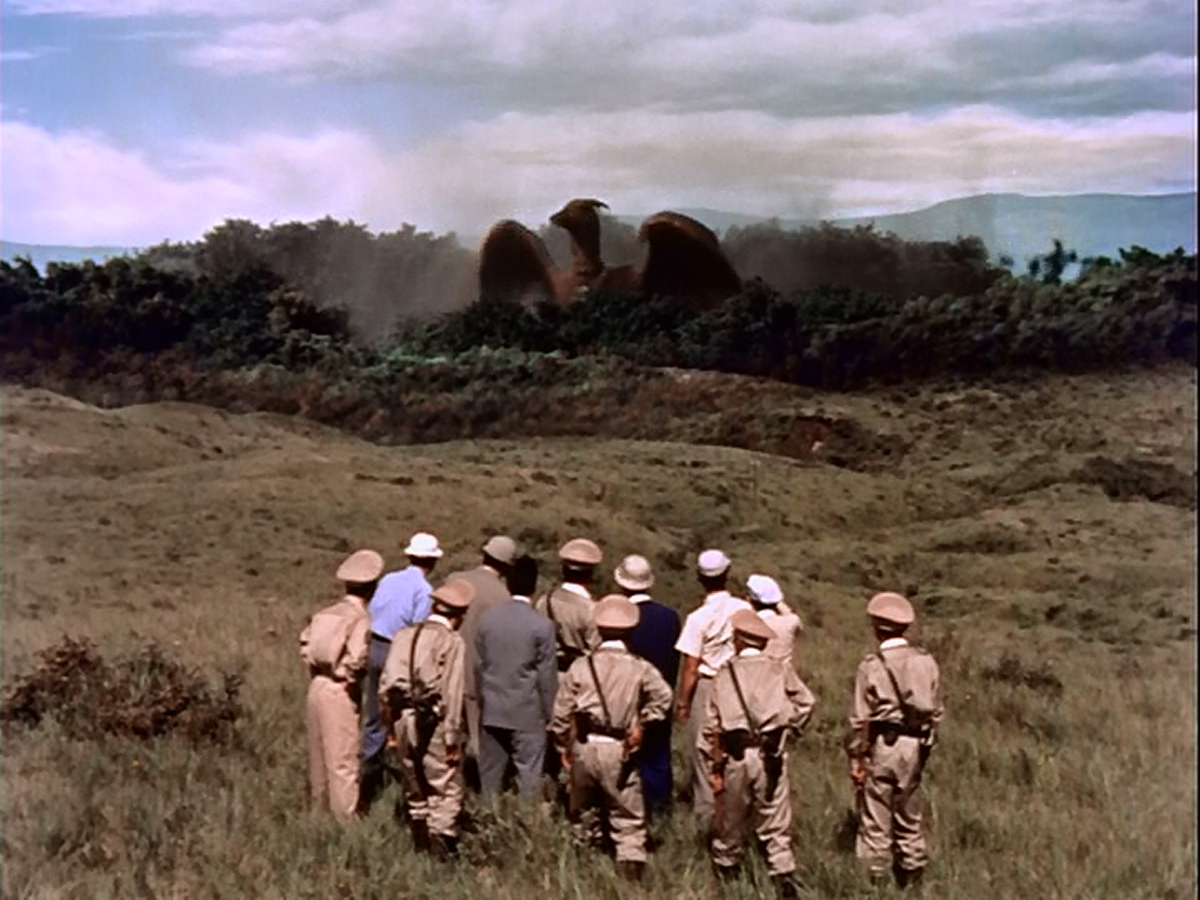
Honda tries out a couple of new ideas. One is we see Rodan from the point of view of the pilots attempting to take it down, rather than steadfastly watching the miniatures spitting fire. The flying chase of Rodan over Fukuoka is like a traditional car chase. There are tracking shots behind the jet formations.
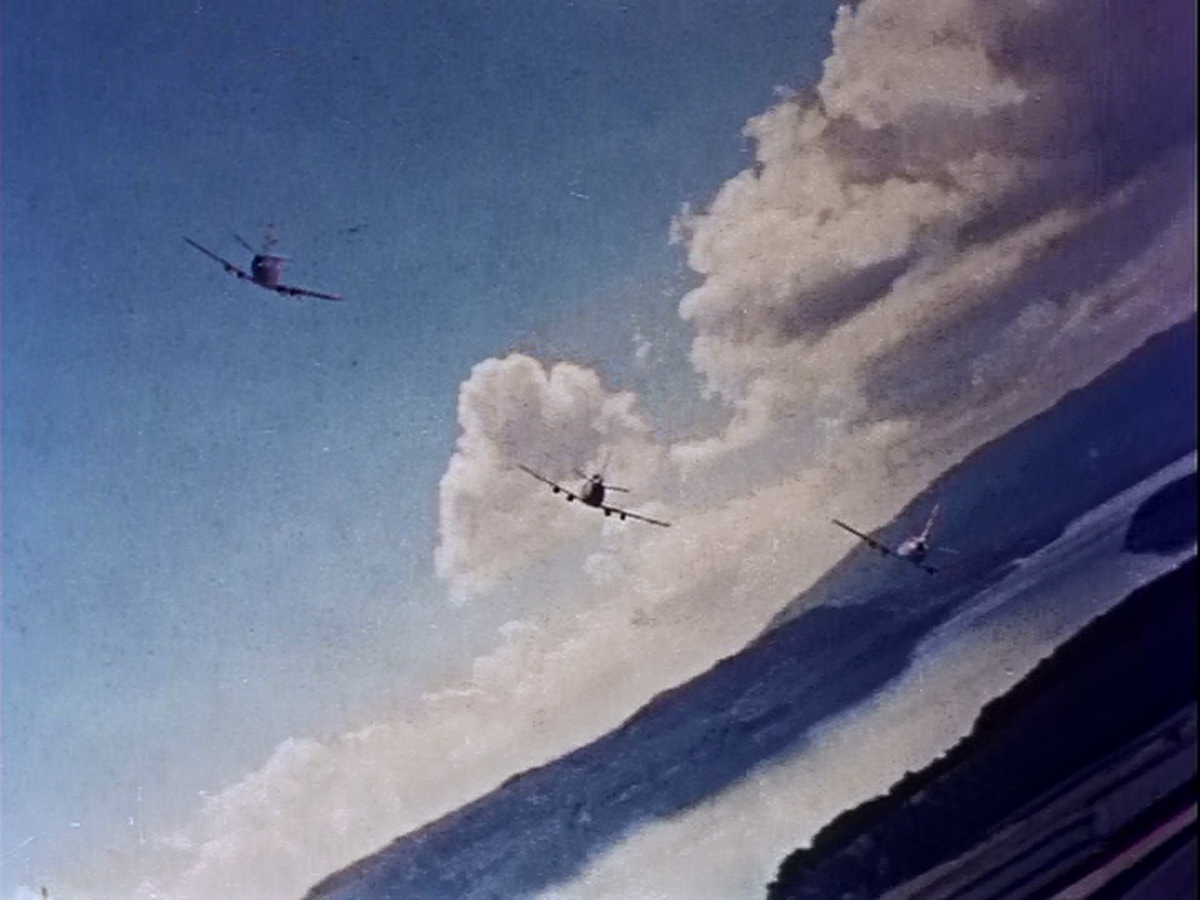
Rodan smashes a bridge, which is successful and dramatic. Godzilla gets tossed into a bridge in Ghidorah, the Three-Headed Monster.
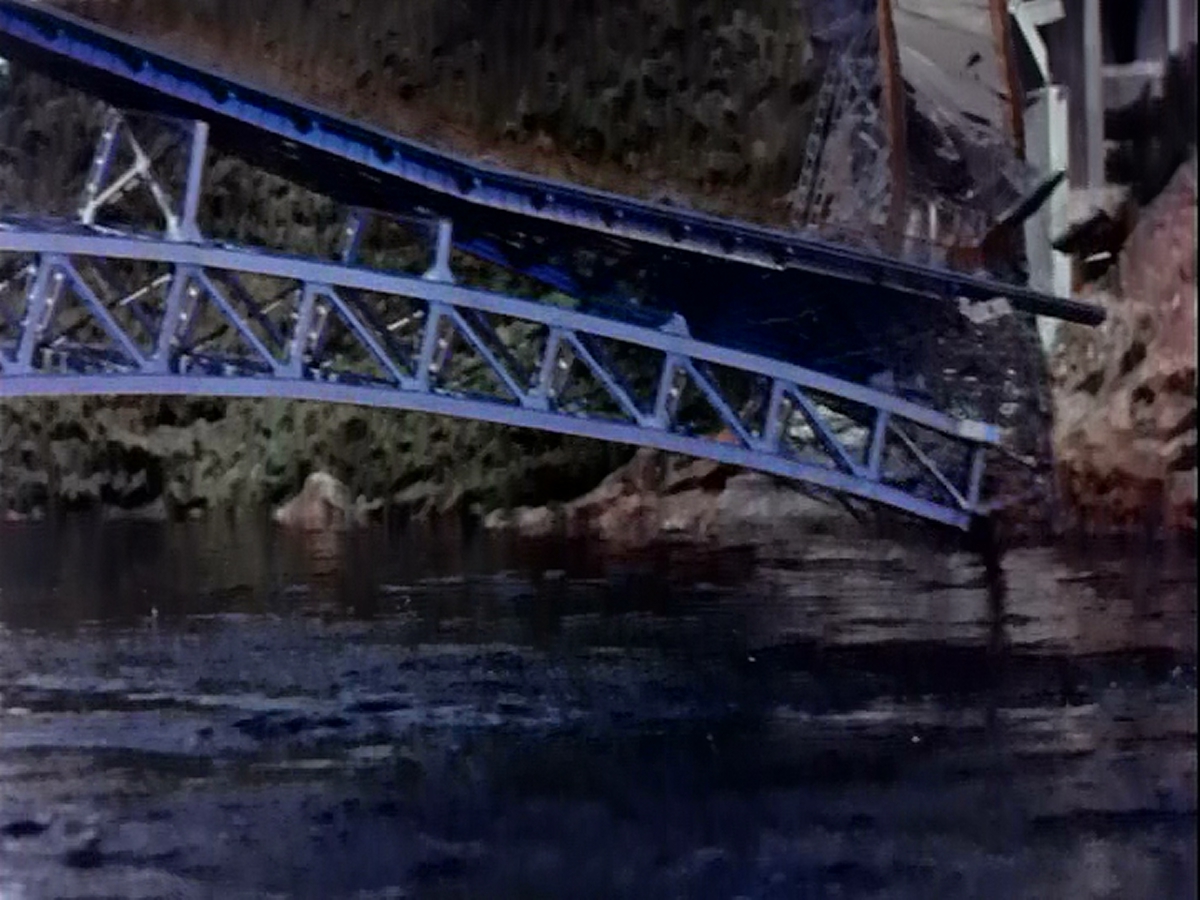
As much as the original Godzilla, Rodan also can be seen as a callback to World War II. With Rodan approaching Fukuoka, the air-raid sirens wail, and people batten down their stores and find places of safety. At the same time, Rodan evokes the Japanese familiarity with destructive earthquakes. Rodan comes from under the ground, and sets off minor earthquakes as it awakens.
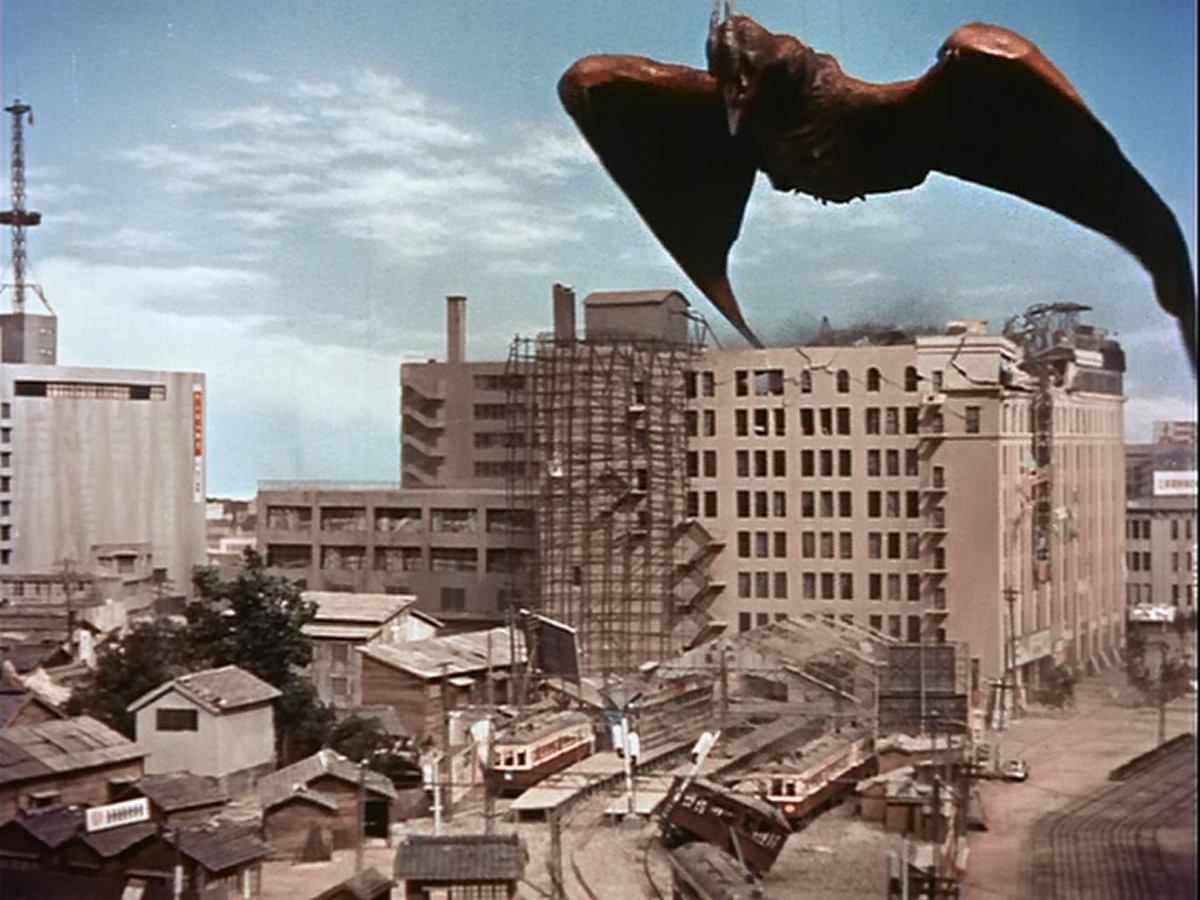
Although the scenes of Rodan's destruction are brief, they are excellent. The shot of tiles being stripped off a roof by Rodan's hurricane-force wake is exquisitely well done. For the first time, tanks roll over small obstacles, like fences, to get a better shot at the monster.
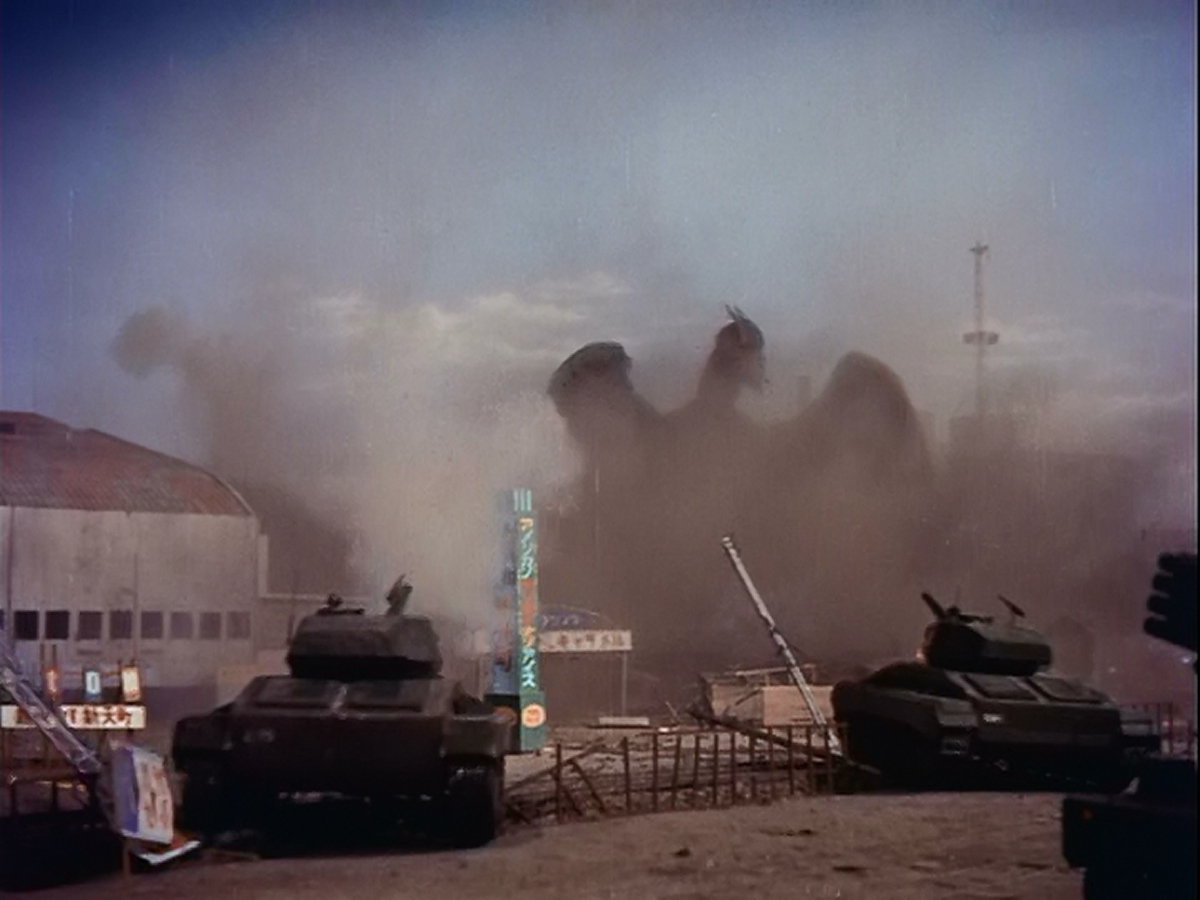
This is also the only Showa film to show Rodan with a breath weapon. It is shown expelling some sort of mist from its mouth, but there doesn't seem to have a direct effect. Rodan's breath doesn't show up again until 1993's Godzilla vs. Mechagodzilla II.
One of the big twists in Rodan is that there are two of them. As Rodan is smashing Fukuoka, another one approaches. The military can't do anything to a single giant monster, what's it going to do against two of them?
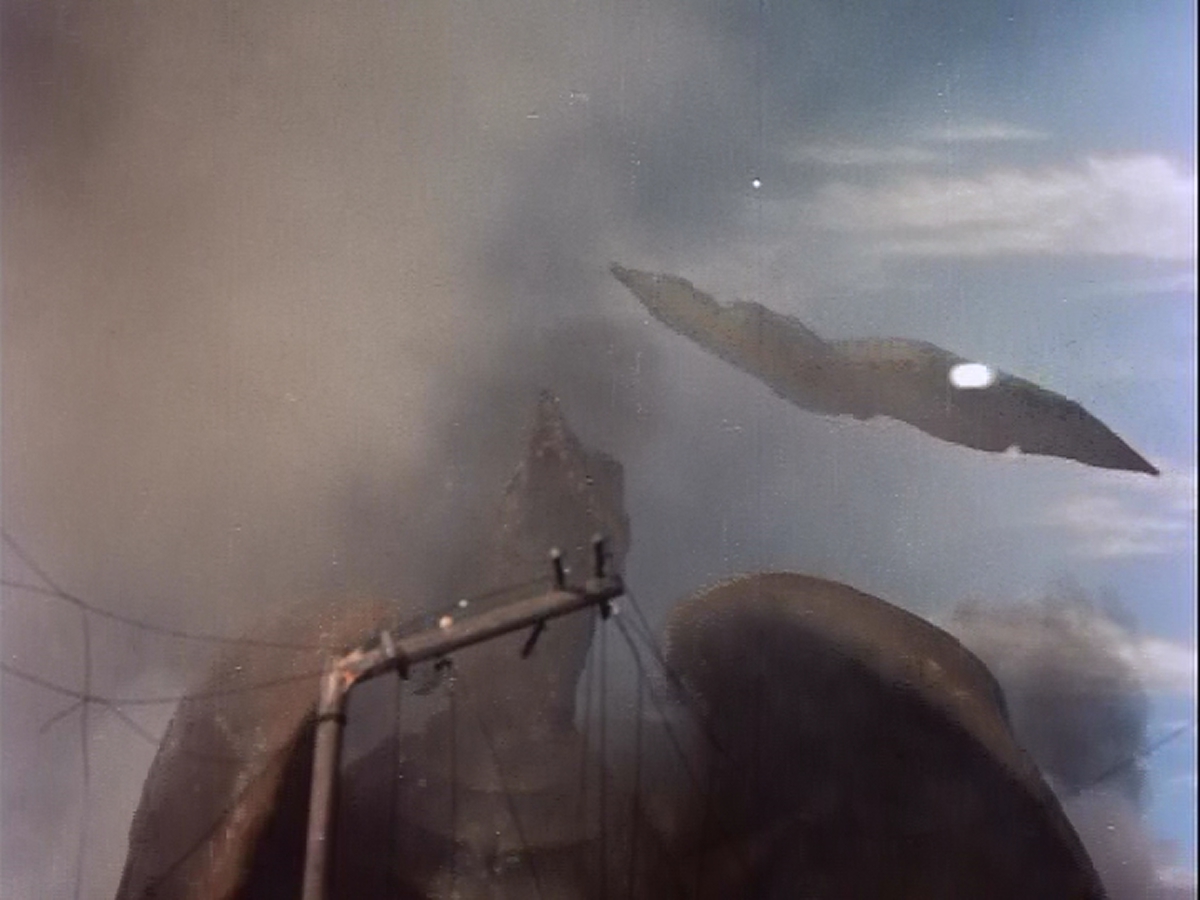
The ending is unexpectedly sad. The Rodans nest in Mount Aso, and during a military bombardment meant to bury the creatures, the volcano erupts. The Rodans cannot seem to fight the instinctive need to return to the next. Ifukube plays a slow, mournful tune, and the end of the pair is sad, rather than the defeat of an enemy. Kiyo hides her face, as one monster burns. A second settles next it it, then ascends briefly, on fire, only to fall back into the lava. Consumed by fire, it still struggles as it burns. This is not a triumphant ending.
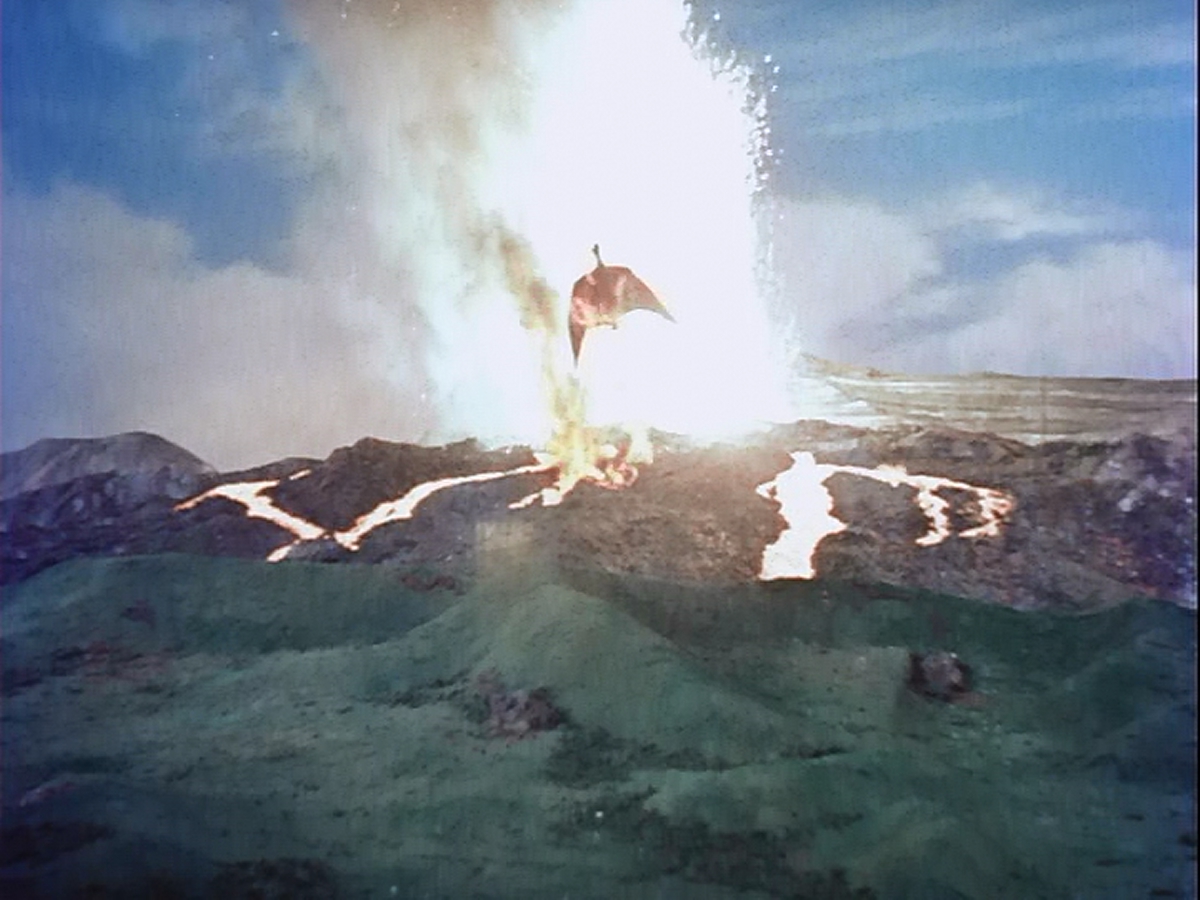
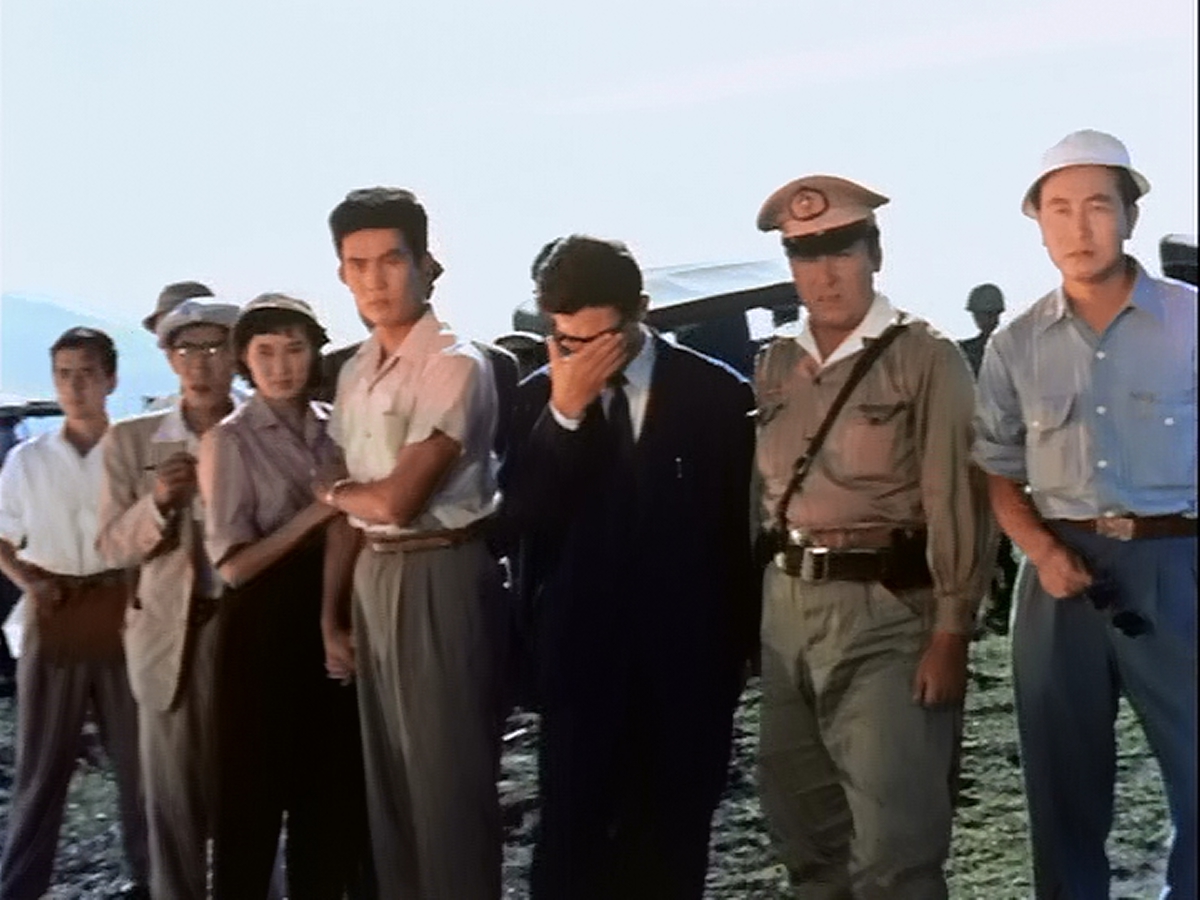
The King Brothers bought Rodan and brought it to American and English audiences. This proved such a success that they would later go on to bankroll thier own kaiju film, Gorgo.
Rodan s an early Kaiju film, and it shows. The tone is darker than the more lighthearted 60's and 70's films. The moral ambiguity, wondering which side is sympathetic, is creates a depth and shows the freedom that the creators had. Rodan's late entry into the film and the concentration of the plight of the miners feels fresh. Rodan is a classic of the ouvre, and rightly so.
Next, something unbelievable.
No comments:
Post a Comment